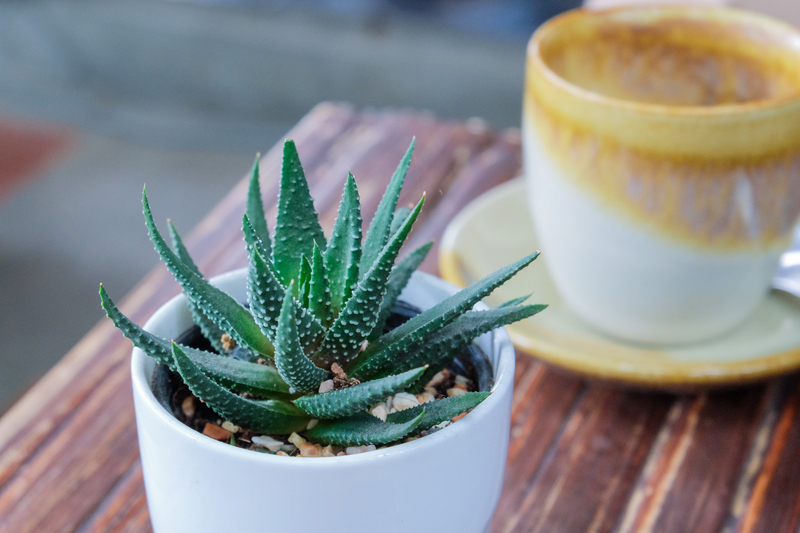Craft a Zen Garden Sanctuary for Mindful Relaxation
Posted on 26/08/2025
Craft a Zen Garden Sanctuary for Mindful Relaxation
Elevate your home's tranquility by crafting a Zen garden sanctuary for mindful relaxation. A Zen garden--also known as a Japanese rock garden or "kare-sansui"--is more than an elegant landscape feature; it is a living meditation tool rooted in centuries-old tradition. These beautiful retreats provide a quiet space for contemplation, stress relief, and reconnection with nature. Whether you have a sprawling backyard or a compact balcony, creating your own Zen-inspired sanctuary can transform any space into a haven for peace and mindful living.
What is a Zen Garden? The Essence of Japanese Calm
A Zen garden is a distinctive element of Japanese culture, known for its balance, simplicity, and symbolism. Traditionally found in Buddhist temples, these gardens are designed to evoke the serene feeling of natural landscapes--mountains, rivers, and islands--using minimalist materials such as sand, rocks, gravel, and carefully selected plants. The core purpose is to encourage meditation, self-reflection, and a deeper connection to one's thoughts and emotions.
- Minimalist design - Stripped back and uncluttered, prioritizing simplicity over extravagance.
- Symbolic elements - Every rock, grain of sand, or patch of moss holds deep meaning.
- Focus on nature - All aspects highlight the beauty and impermanence of the natural world.

Benefits of Creating a Zen Garden Sanctuary for Mindful Relaxation
Why invest time and effort in building your own Zen garden relaxation space? The advantages extend far beyond aesthetic appeal:
- Stress Relief: The calm, organized environment soothes the senses and eases daily stressors.
- Enhanced Mindfulness: Tending to the garden and meditating within it fosters present-moment awareness.
- Creativity Boost: The creative process of design and maintenance stimulates inspiration and fresh thinking.
- Nature Connection: Even a small Zen rock garden attached to a window can infuse your day with the restorative energies of nature.
- Mental Focus: Regular use of your sanctuary as a meditation space can improve concentration and mental clarity.
Crafting a Zen garden sanctuary for mindful relaxation is a holistic way to enhance your environment and your well-being.
Key Elements of a Zen Garden Sanctuary
1. Rocks and Stones: The Bones of the Garden
In Zen gardening, rocks are more than decorative--they represent mountains, islands, or animals. Use asymmetrical groupings for a natural feel, and position stones to create focal points or guide visual flow. Select stones of varying sizes and textures to mimic natural landscapes.
2. Gravel or Sand: Symbolizing Water
Sweeping raked gravel or sand is a hallmark of Zen gardens, signifying streams, lakes, or the ocean. Patterns drawn with a rake can evoke the gentle flow of water, stirring creativity and aiding mindfulness. Choose fine, pale gravel or white sand for your DIY Zen retreat.
3. Moss, Plants, and Greenery: Soothing the Senses
While traditional Zen gardens may limit plant life, soft, lush patches of moss suggest tranquility and age. Consider low-maintenance, shade-loving plants--such as ferns, bamboo, or groundcovers. Shrubs pruned with care offer texture, while a single well-placed bonsai tree brings life and focus.
4. Structures and Boundaries
Fencing, lattices, or stones can define the edges of your Zen sanctuary, creating intimacy and privacy. Think about natural screens such as bamboo walls or stepping stones to separate the garden from the outside world.
5. Water Features
Though not always present, a small pond, bubbling fountain, or a simple stone basin (tsukubai) introduces the soothing sound of water--a classic meditative element for mindful relaxation.
6. Ornaments and Personal Touches
Minimal decorative accents--like a granite lantern, a rustic bench, or a weathered Buddha statue--can deepen the atmosphere of tranquility and invite more profound meditation.
Steps to Create Your Zen Garden Sanctuary for Mindful Relaxation
Step 1: Identify Your Sanctuary Space
You don't need a vast backyard; Zen gardens can thrive on patios, decks, balconies, or even indoors. Pick a spot that's quiet, accessible, and set apart from everyday high-traffic areas.
Step 2: Sketch a Simple Zen Garden Plan
Before buying materials, draft your layout. Decide:
- How large or small your sanctuary will be
- Which elements (rocks, gravel, water, plants) you'll include
- The position of any paths, seating areas, or shade features
Look up inspiring Zen garden layouts online, or visit local gardens for ideas. Keep in mind the principles of asymmetry, balance, and open space.
Step 3: Gather Your Materials
- Garden rocks (three or more, in odd quantities)
- Gravel or fine sand (enough to create a 1-2" layer)
- Mosses, shade plants, or bonsai
- Bamboo, wood, or stone for borders
- Water feature supplies (optional)
- Tools: rake, spade, gloves, wheelbarrow, watering can
- Personal touches: lantern, statue, small bench
Step 4: Prepare the Ground
Clear your chosen site of grass, weeds, and debris. If making a small indoor or tabletop Zen garden, use a tray, shallow box, or dedicated pot. For outdoor layouts, lay down landscape fabric to prevent weeds and keep your gravel or sand clean.
Step 5: Position Major Stones and Features
Place large rocks, lanterns, or benches first. Arrange stones in natural patterns, grouping them in triangles or clusters, avoiding straight lines. Test perspectives from various views to find the most harmonious configuration.
Step 6: Spread Sand or Gravel
Pour sand or gravel carefully into the garden bed. Maintain a smooth, even surface. Use your rake to shape flowing lines--imitating water around stones--and change patterns as your mood shifts.
Step 7: Add Plant Life Thoughtfully
Include mosses and carefully chosen plants in shady corners or at the base of stones for a tranquil, aged look. Keep plantings minimal and orderly for authenticity and ease of maintenance.
Step 8: Complete with Borders and Accessories
Finish by installing natural boundaries or accents. Add your personal Zen touches--such as a weatherproof bench or a subtle, solar-powered lantern--to invite relaxation and meditation.
Step 9: Maintain and Evolve Your Zen Sanctuary
Tending a mindful relaxation garden is a meditation in itself. Rake new patterns, sweep away debris, prune plants, and refresh gravel or sand as needed. Let the changing seasons inspire evolution in your sacred space.
Design Tips for a Zen Garden Sanctuary
- Prioritize simplicity: Less is more--focus on empty space and subtle beauty.
- Embrace imperfection: Use irregular stones and imperfect raked lines as symbols of nature's uniqueness.
- Choose a restrained color palette: Natural greens, earth tones, and monochrome gravel evoke calm.
- Add seating: A weatherproof mat, meditation cushion, or small wooden bench invites prolonged relaxation.
- Consider lighting: Solar path lights or lanterns enhance evening serenity.
Mindful Practices in Your Zen Garden Retreat
Zen Meditation (Zazen)
Sit quietly, focus on your breath, observe your thoughts, and find inner peace surrounded by your Zen-inspired garden oasis.
Walking Meditation (Kinhin)
If your space allows, take slow, deliberate steps along a stone path or around your garden--tuning into sensations of movement, air, and earth underfoot.
Raking Patterns
Let the repetitive, creative act of raking sand or gravel channel tension into focus, serving as a tactile meditation for mindful relaxation.

FAQ: Crafting and Enjoying a Zen Garden Sanctuary for Mindful Relaxation
- Can I make a Zen garden indoors?
Yes! Tabletop Zen gardens are perfect for apartments or offices. Use a tray or shallow box, add sand, tiny rocks, and miniatures for an easy indoor sanctuary. - What plants are best for a Zen garden?
Bonsai, moss, ferns, Japanese maples, and bamboo are all suitable for a classic Zen garden vibe, depending on your climate and space. - How often should I maintain my garden?
Regularly remove debris, refresh sand or gravel as needed, trim plants monthly, and rake patterns whenever you wish to change things up or clear your mind. - Do Zen gardens have to be dry, with no water?
While the classic kare-sansui uses sand and rocks to symbolize water, adding an actual water feature can further enhance the calming ambiance if you choose.
Conclusion: Discover Tranquility in Your Own Zen Garden Sanctuary
Learning to craft a Zen garden sanctuary for mindful relaxation is a celebration of simplicity, presence, and harmony with nature. Your carefully designed retreat will not only beautify your home, but will provide an everyday escape for stress relief and mindful living.
Begin with the basic principles of Zen design, and trust your intuition to guide each small decision. Whether you rake patterns with the seasons or sit in stillness amid the stones, your garden sanctuary will continue to nurture mind, body, and spirit.
Embrace the art of mindful relaxation--transform your space into a Zen garden oasis today.

